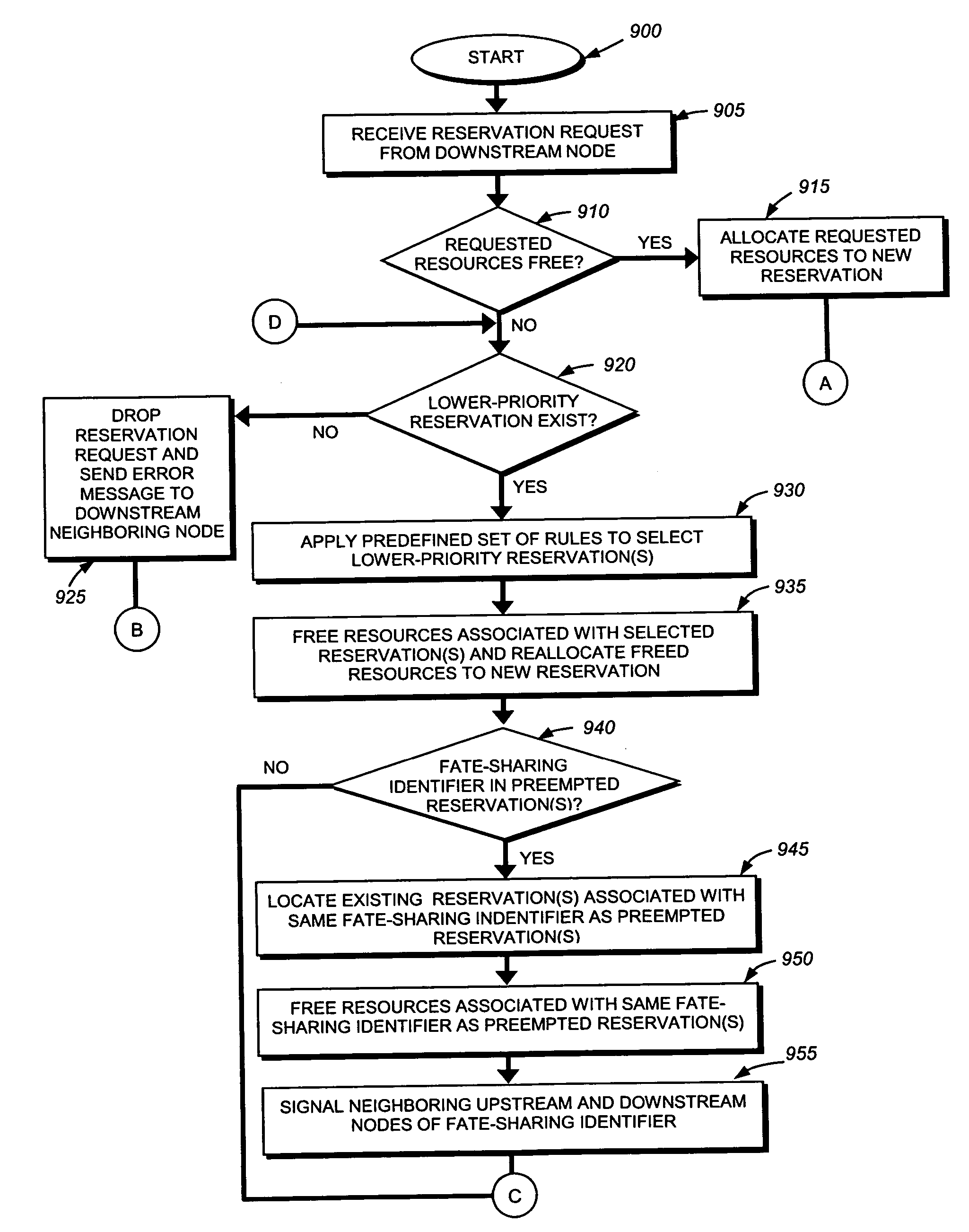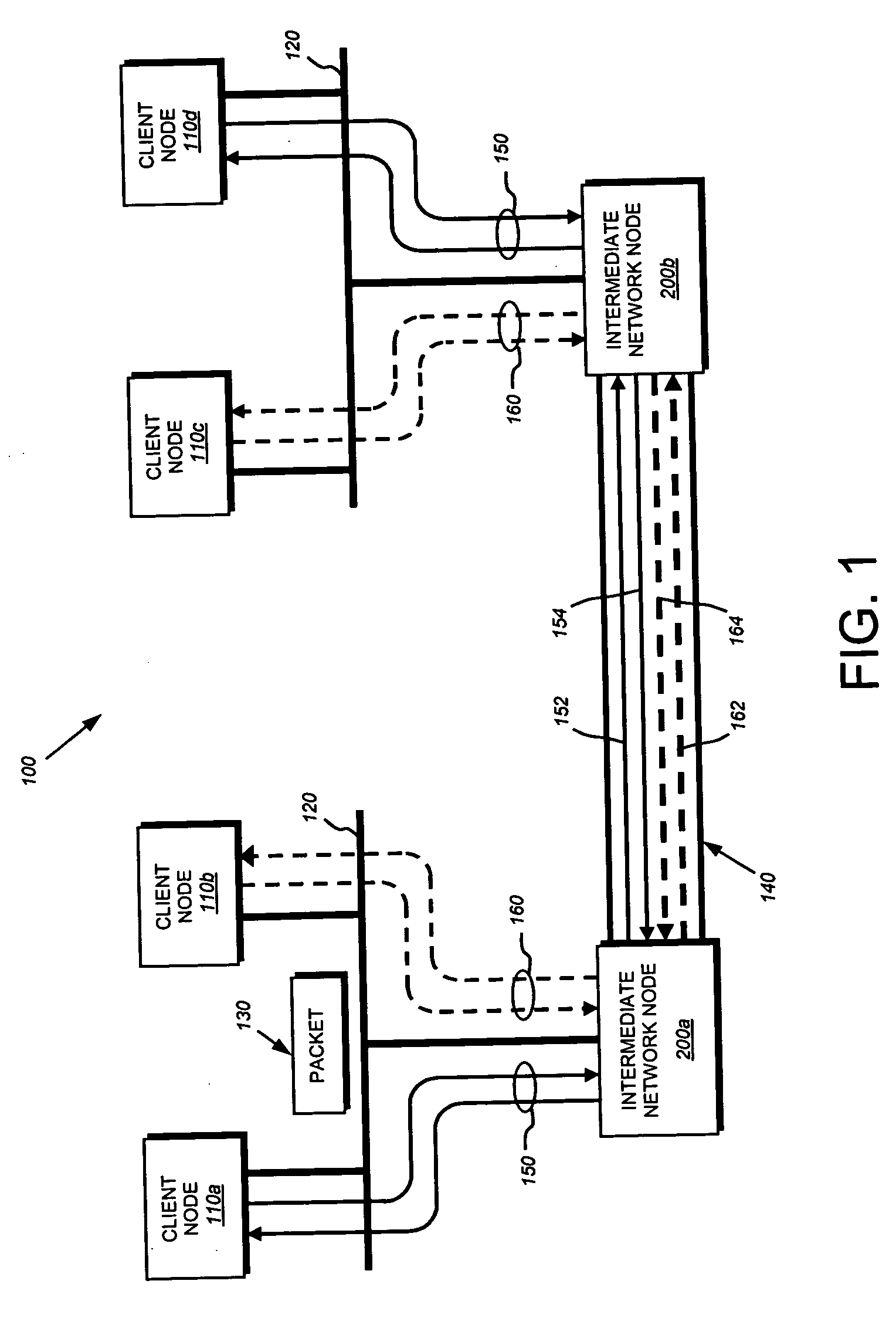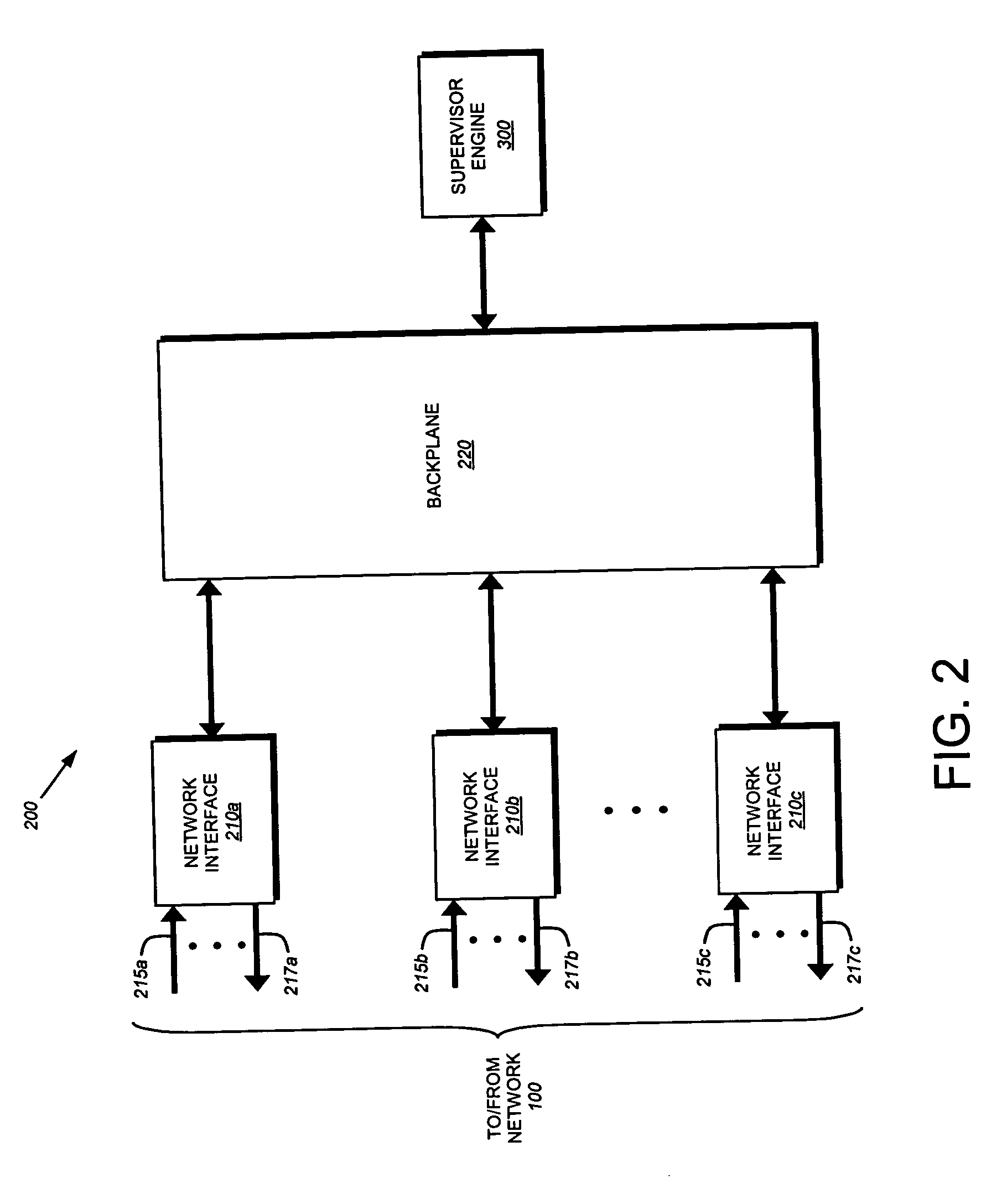Mechanism to improve preemption behavior of resource reservations
a resource reservation and preemption behavior technology, applied in the field of network communication, can solve the problems of all other fate-sharing flows in the group consequently losing their utility, and achieve the effects of avoiding resource reservations, avoiding resource reservation disruptions, and avoiding resource reservations efficiently
- Summary
- Abstract
- Description
- Claims
- Application Information
AI Technical Summary
Benefits of technology
Problems solved by technology
Method used
Image
Examples
Embodiment Construction
[0041]FIG. 1 is a schematic block diagram of a network 100 that advantageously may be used with the present invention. The network comprises a plurality of interconnected network nodes, such as client nodes 110 and intermediate network nodes 200. The nodes may be coupled to one another over local area networks (LAN) 120, point-to-point links 140, wide area networks (WAN), wireless LANs, etc. to form the network 100. The interconnected network nodes may exchange discreet data packets 130 which are formatted according to predefined sets of network communication protocols, such as the Transmission Control Protocol / Internet Protocol (TCP / IP) and the Resource Reservation Protocol (RSVP).
[0042] A unidirectional stream of data packets 130, or a “data flow,” may be transmitted from a source client node to a destination client node. The data flow may traverse one or more intermediate network nodes 200, such as routers or switches, positioned along the data path interconnecting the source an...
PUM
 Login to View More
Login to View More Abstract
Description
Claims
Application Information
 Login to View More
Login to View More - R&D
- Intellectual Property
- Life Sciences
- Materials
- Tech Scout
- Unparalleled Data Quality
- Higher Quality Content
- 60% Fewer Hallucinations
Browse by: Latest US Patents, China's latest patents, Technical Efficacy Thesaurus, Application Domain, Technology Topic, Popular Technical Reports.
© 2025 PatSnap. All rights reserved.Legal|Privacy policy|Modern Slavery Act Transparency Statement|Sitemap|About US| Contact US: help@patsnap.com



